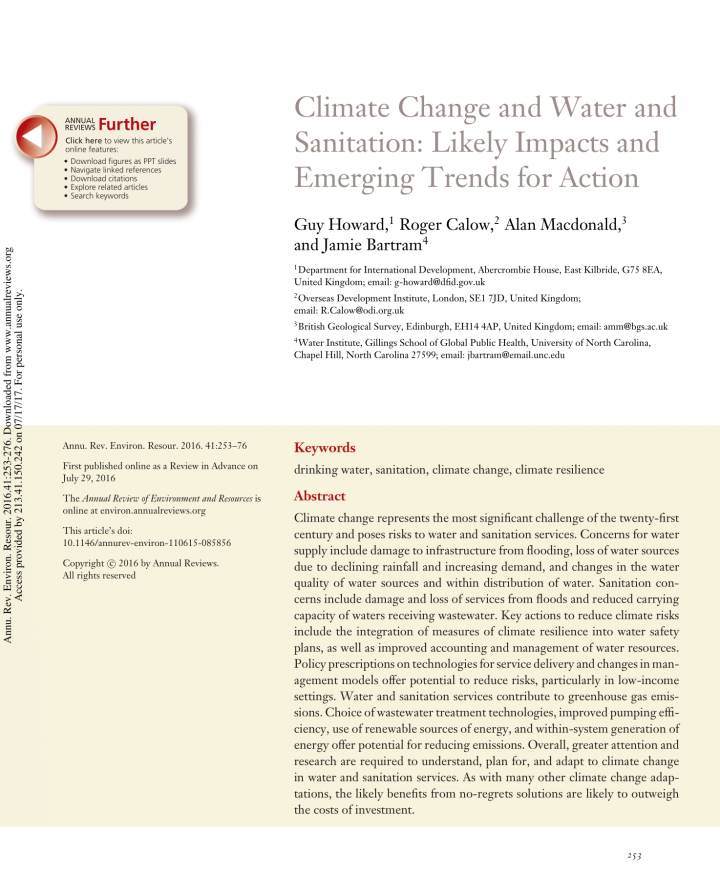Climate Change and Water and Sanitation: Likely Impacts and Emerging Trends for Action
Howard, G., Calow, R., Macdonald, A., Bartram, J. (2016)

Published in: 2016
Pages: 27
Publisher:
Annual Review of Environment and Resources, 41:253–76, doi: 10.1146/annurev-environ-110615-085856
Author:
Howard, G., Calow, R., Macdonald, A., Bartram, J.
Uploaded by:
SuSanA Admin
Partner profile:
common upload
1217 Views
44 Downloads
Climate change represents the most significant challenge of the twenty-first century and poses risks to water and sanitation services. Concerns for water supply include damage to infrastructure from flooding, loss of water sources due to declining rainfall and increasing demand, and changes in the water quality of water sources and within distribution of water. Sanitation concerns include damage and loss of services from floods and reduced carrying capacity of waters receiving wastewater. Key actions to reduce climate risks include the integration of measures of climate resilience into water safety plans, as well as improved accounting and management of water resources. Policy prescriptions on technologies for service delivery and changes in management models offer potential to reduce risks, particularly in low-income settings. Water and sanitation services contribute to greenhouse gas emissions. Choice of wastewater treatment technologies, improved pumping efficiency, use of renewable sources of energy, and within-system generation of energy offer potential for reducing emissions. Overall, greater attention and research are required to understand, plan for, and adapt to climate change in water and sanitation services. As with many other climate change adaptations, the likely benefits from no-regrets solutions are likely to outweigh the costs of investment.
Bibliographic information
Howard, G., Calow, R., Macdonald, A., Bartram, J. (2016). Climate Change and Water and Sanitation: Likely Impacts and Emerging Trends for Action. Annual Review of Environment and Resources, 41:253–76, doi: 10.1146/annurev-environ-110615-085856
Filter tags
English















